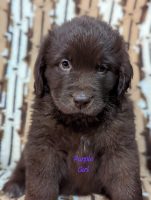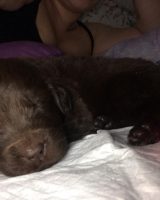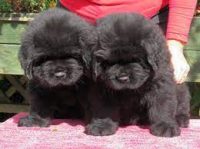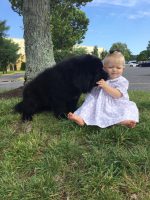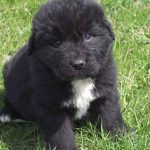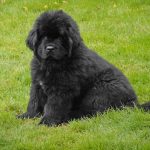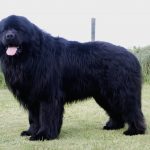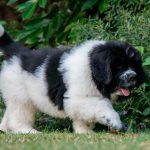 If you’re thinking about buying “a puppy” just because you think it might be good for the kids to learn responsibility or that photo just looked so damn cute or you want “something” to keep an eye on the house or you want to impress your friends, then don’t buy a dog – all breeds of dog need to be in a loving, caring home where their people treat them as part of the family, look after them well, are prepared to spend the money on vet bills and provide everything they could possibly need for the term of their lives. Dog ownership is a misleading term – you must be prepared to be owned by your dog.
If you’re thinking about buying “a puppy” just because you think it might be good for the kids to learn responsibility or that photo just looked so damn cute or you want “something” to keep an eye on the house or you want to impress your friends, then don’t buy a dog – all breeds of dog need to be in a loving, caring home where their people treat them as part of the family, look after them well, are prepared to spend the money on vet bills and provide everything they could possibly need for the term of their lives. Dog ownership is a misleading term – you must be prepared to be owned by your dog.
If you still want to research Newfoundlands, call or email all the owners and breeders you can find, tell them your story and ask them to tell you some about this glorious breed, read all the material you can get your hands on and make an informed decision about inviting a Newf to join your family.
Any reputable breeder will have done all relevant health checks on breeding stock at the very least. Ask all breeders what they screen for and copies of any certificates/reports pertaining to your prospective puppy. Most breeders will also require you to answer a lot of questions and give them guarantees of your intentions toward a puppy.
Some common ailments in Newfs are –
- Hip & Elbow Dysplasia – All breeding stock should have been X-rayed prior to breeding – each animal (Sire & Dam) will have a score sheet from the AVA (Australian Veterinary Assoication) which the breeder should be happy to show you.
- Cystinuria – This disease is detected using a DNA test. Provided the status of both parents is known, selective breeding can be undertaken.
 The black Newfoundland is a breed of dog from the working group. This group protects, pulls, and guards, and this large Newfoundland certainly fits into this category. They are natural swimmers, who excel at water task. They do everything from pulling nets and small boats, to ocean rescues. This breed is also affectionately nicknamed Newfs or Newfies.
The black Newfoundland is a breed of dog from the working group. This group protects, pulls, and guards, and this large Newfoundland certainly fits into this category. They are natural swimmers, who excel at water task. They do everything from pulling nets and small boats, to ocean rescues. This breed is also affectionately nicknamed Newfs or Newfies. As one of the most distinctive breeds in the world, Giant Newfoundland dogs catch the eye of anyone who happens to come across one of these enormous canines. While their extreme size might make them the wrong type of pet for some people, Newfoundland owners love their massive dogs for their unique attributes that no other breed possesses. Beloved by dog breeders and owners across the world, there’s simply nothing quite like a Newfie if you’re looking for an extra-large pet that’s hungering for your love and affection.
As one of the most distinctive breeds in the world, Giant Newfoundland dogs catch the eye of anyone who happens to come across one of these enormous canines. While their extreme size might make them the wrong type of pet for some people, Newfoundland owners love their massive dogs for their unique attributes that no other breed possesses. Beloved by dog breeders and owners across the world, there’s simply nothing quite like a Newfie if you’re looking for an extra-large pet that’s hungering for your love and affection. The white Newfoundland is a variety of the Newfoundland breed of dog. Originating from the Canadian province of Newfoundland, the breed belongs to the working group of dogs. The Newfoundland was originally bred as a working dog, helping fisherman in the province tug nets from the water and also assisting lumberjacks in towing logs from the freshly cut forests. The Newfoundland breed traditionally is coated in black or a black and white combination called Landseer, but the white Newfoundland is indeed all white in the coat.
The white Newfoundland is a variety of the Newfoundland breed of dog. Originating from the Canadian province of Newfoundland, the breed belongs to the working group of dogs. The Newfoundland was originally bred as a working dog, helping fisherman in the province tug nets from the water and also assisting lumberjacks in towing logs from the freshly cut forests. The Newfoundland breed traditionally is coated in black or a black and white combination called Landseer, but the white Newfoundland is indeed all white in the coat.